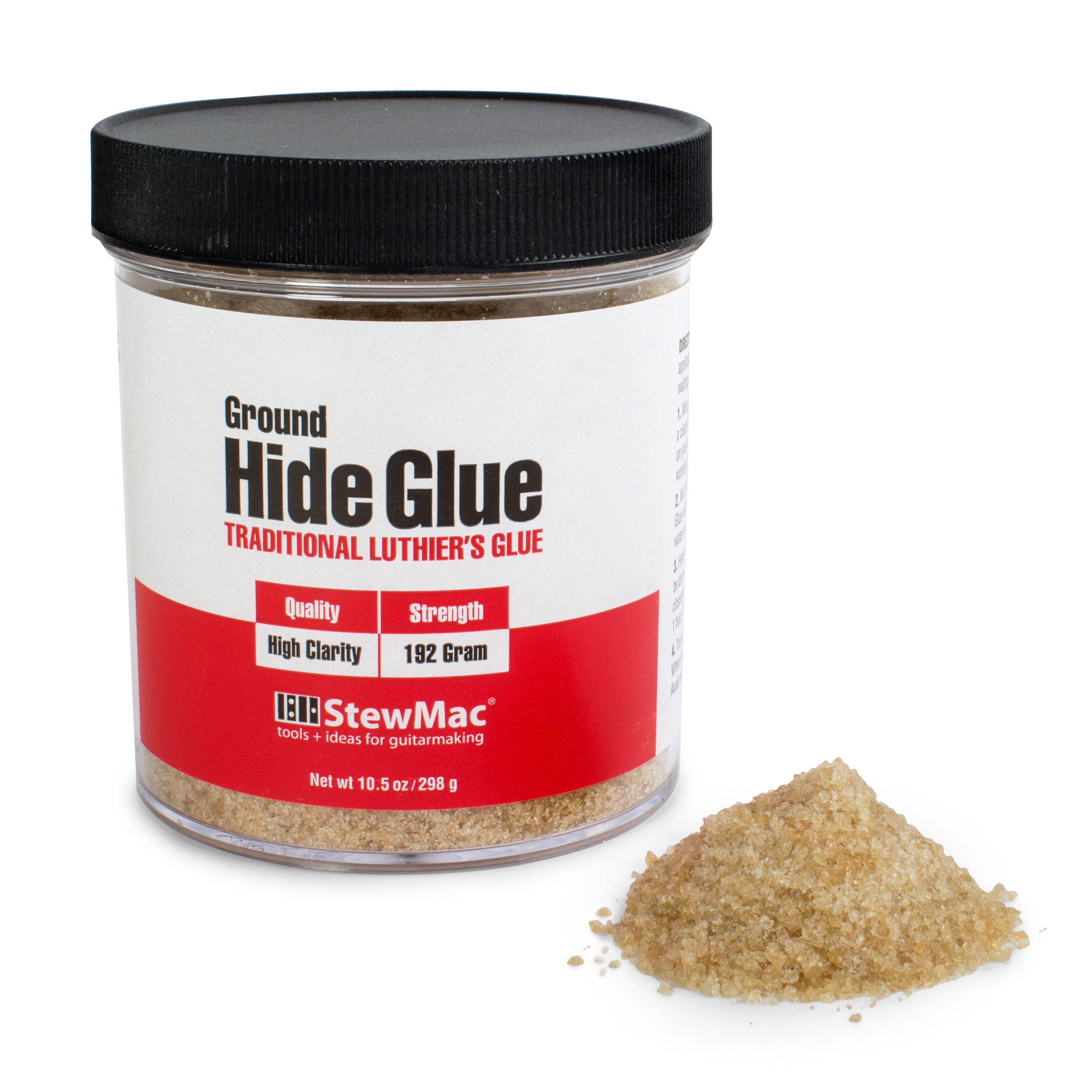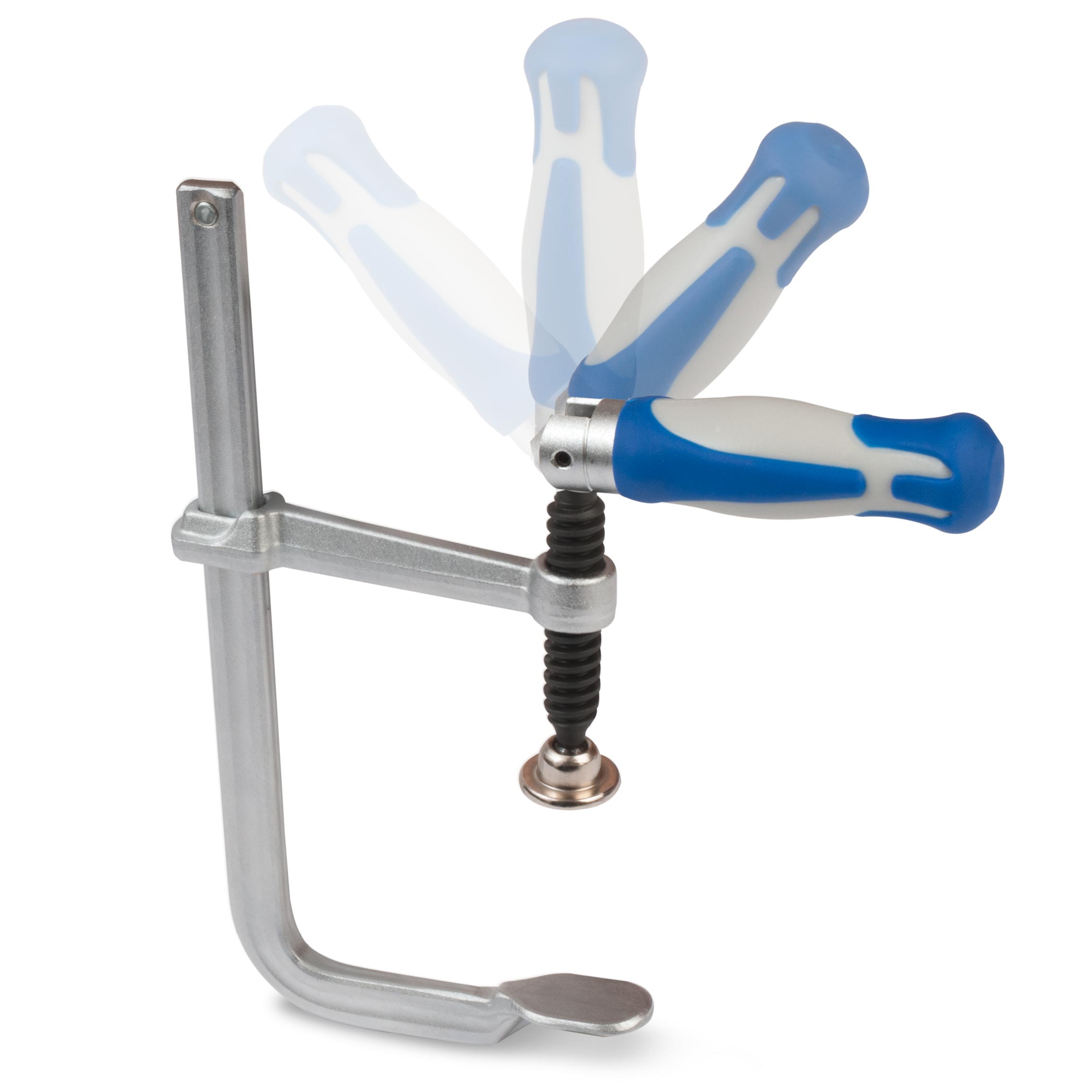Clamping a guitar neck really tight (without damage)
Issue 215 April 24, 2014
Working on a 1938 Gibson lap steel, Dan Erlewine needs to clamp the neck way more tightly than usual. He comes up with a special jig by modifying a Rock-n-Roller neck rest.
- Huge magnet on an old Charlie Christian pickup
- Really unusual 1930s control pots
- Drilling two holes turns a neck rest into a super-clamp
- Clamping the top and back to the guitar sides
Video Transcription
[on-screen text reads: Trade Secrets! Guitar shop tech tips from stewmac.com]
Dan Erlewine: Here's something cool. Drill a couple of holes in the neck rest and you get a different kind of clamp [on-screen text reads: Guitar neck clamp]. I'll show you what I mean [on-screen text reads: Self-leveling repair cradle - StewMac Deluxe Rock-n-Roller Neck Rest].
Here's what I'm working on, a Gibson seven-string lap steel. It's an EH-150 and I'm pretty sure it was made in 1938, according to my studies. It's got a Brazilian rosewood board and some beautiful maple on it, and I love the sunburst. It's in the shop, because it's come unglued at the butt end. The block here is completely loose from the top and the back and along the sides for about four inches, and I'm going to clean that and glue it up. Before I could do that, I had to remove the pickup and the controls, and that wasn't easy. To date this guitar and the pickup that you're looking at here, I used George Gruhn's Guide to Vintage Guitars, which has the info that you need and it said it was a 1938 that also said that that was the year, maybe 37, when they switched to this shape of a magnet on the bottom of the pickup.
That's called a Charlie Christian pickup, because it was used on the famous jazz guitar players guitars in the late '30s and '40s. Check out Charlie Christian. This is a ground wire down here that's fastened to the bridge that grounds the unit. You've probably never seen a jack like that. These pots are huge and they're well-sealed. I'm hoping that I can get in from the top and squirt some cleaner in there [on-screen text reads: Pot and switch cleaner - DeoxIT Pot & Switch Cleaner from StewMac], because I can't move the shafts. I'm sort of afraid to touch it, because it's so delicate. Hopefully, I can get them back into the guitar once they're cleaned.
Turn a neck rest into a super-clamp
For this glue-up, I want to really hold the guitar solid, because I'm going to work on this end with three big swivel-handle clamps [on-screen text reads: Clamps are a must-have - Swivel Handle Clamp from StewMac] that are really strong enough to do this job and flatten it out, but they're heavy. I'd be afraid to do that job and just clamp the neck directly into my vice.
There's too good of a chance that it would slip. So the neck rest becomes a unique clamp. With the holes in the back, I can come in with two smaller clamps and clamp the neck down, and they're really tight. And I'm gripping the neck rest itself in my vice stronger than I would ever squeeze on a neck. So it's not going to slip during the middle of the job, which would be a real problem.
Gluing with hot hide glue
Now, the end block is here. It's not huge, and the top and back are both loose completely. I can pass a knife right through there and they're loose from the sides about this far on either side. I'll glue the top up first and the bottom later, because the binding's loose there too and that takes a little extra work. I'm going to use hot Hide Glue. That's another reason for going one half at a time.
That's my gluing caul that I made out of a blank of three-sixteenth acrylic [on-screen text reads: Find acrylic blanks at StewMac - Acrylic Blank Template]. And this is just an old piece of shelf board to protect the back. It takes a fair amount of pressure to squeeze this maple down, but it goes. Really, all I'm doing right now anyhow is dry clamping. I haven't used glue, because for the last time, I'm checking it out. Because once I do glue, I wouldn't want to have any cameras around. And I wouldn't have time to talk, because you have two minutes with hot glue and you better be clamped.
Okay. I glued it up with hot high glue and it sat all night, and it's dried beautifully. I can feel a little bit, but I knew it would be that way. Next, I'll glue up the bottom the same way, and then I can go about trying to get the pickup and the controls back in.






